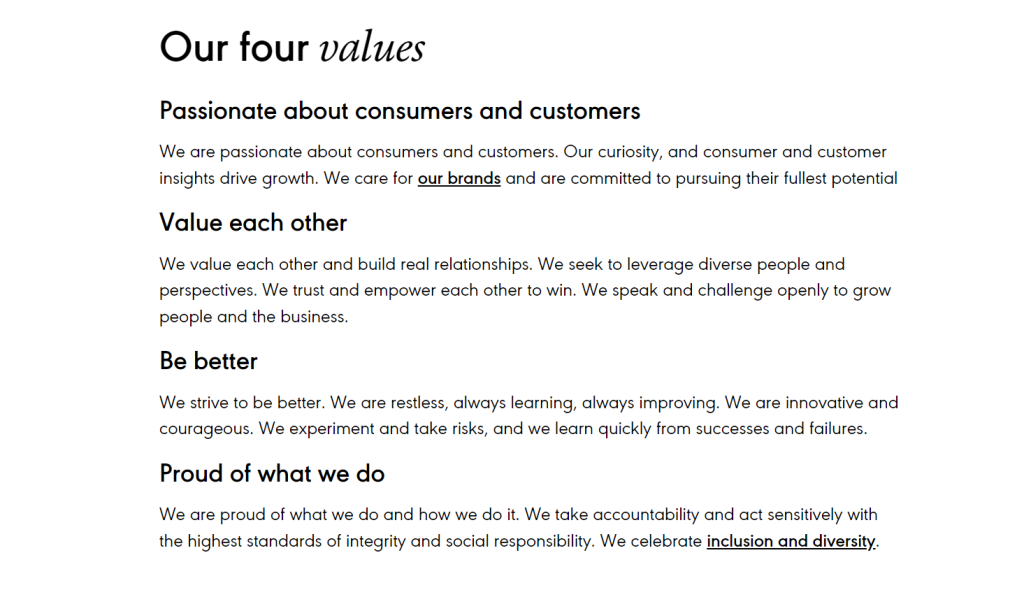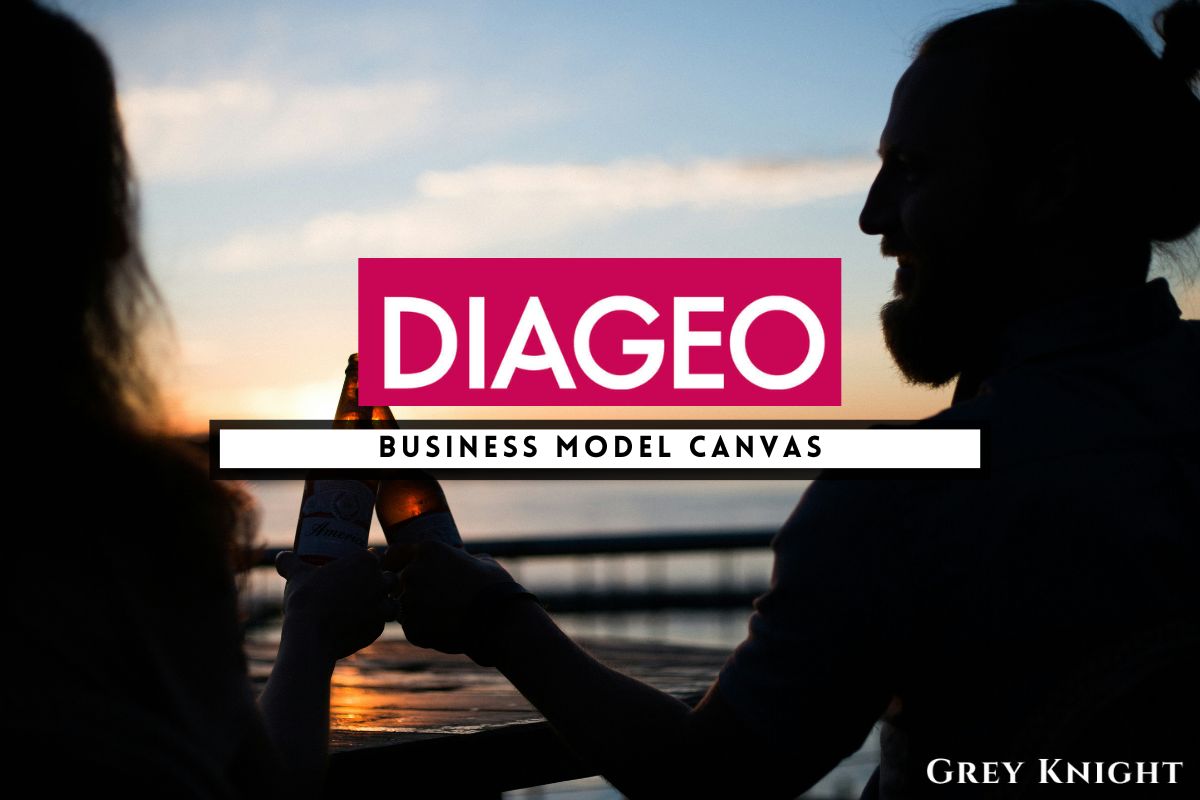Table of Contents
ToggleA Brief History of Diageo
Diageo plc is a British multinational beverage company that was formed in 1997 through the merger of Grand Metropolitan and Guinness. Grand Metropolitan was a hotel and restaurant operator, while Guinness was a brewing company that was founded in 1759 by Arthur Guinness.
The history of Diageo plc can be traced back to the early 19th century when the Guinness brewery was established in Dublin, Ireland. Over the years, Guinness grew to become one of the largest and most successful beer companies in the world, with its iconic stout being enjoyed by consumers across the globe.
Meanwhile, Grand Metropolitan was founded in 1934 and grew to become a major player in the hospitality and beverage industries. The company acquired various brands and businesses, including Burger King, Pillsbury, and Haagen-Dazs, which helped it become a powerhouse in the consumer goods market.
In 1997, Grand Metropolitan and Guinness decided to merge their respective businesses to form Diageo plc, which set out to become the world’s leading premium drinks company with a wide portfolio of well-known brands in spirits, beer, and wine. The newly formed company continued to grow through acquisitions and partnerships, expanding its reach and diversifying its product offerings.
Today, Diageo plc is a global leader in the alcoholic beverage industry, with a strong presence in over 180 countries and a portfolio of iconic brands such as Johnnie Walker, Smirnoff, Captain Morgan, and Guinness. The company continues to thrive and innovate in the ever-evolving drinks market, solidifying its position as a powerhouse in the industry.
Who Owns Diageo?
Diageo plc, a multinational alcoholic beverages company, is owned by a diverse group of shareholders. As of the most recent data available, the top 10 shareholders of Diageo plc are as follows:
1. BlackRock, Inc.
2. Vanguard Group, Inc.
3. Norges Bank Investment Management
4. Capital Research & Management Co.
5. State Street Global Advisors
6. Invesco Ltd.
7. Massachusetts Financial Services Co.
8. Legal & General Group Plc
9. Wellington Management Co. LLP
10. Schroders plc.
These top shareholders represent a mix of institutional investors, investment management firms, and asset management companies, reflecting the broad ownership of Diageo plc. This diverse ownership structure allows for a wide distribution of ownership and a variety of perspectives in the company’s governance and decision-making processes.
Diageo Mission Statement

Diageo plc’s mission is to celebrate life every day, everywhere. As a leading global beverage company, they are committed to creating outstanding brands and building long-term relationships with their customers. Their products are enjoyed by millions of people around the world, and they strive to provide high-quality, innovative drinks that enhance social occasions and bring people together. In addition, they are dedicated to promoting responsible drinking and sustainability, ensuring their business practices have a positive impact on the communities and environments in which they operate.
How Diageo Makes Money?
Diageo plc, a multinational beverage company, makes money primarily through the sale of alcoholic beverages. The company’s revenue stream is generated from the production and distribution of a wide range of popular brands, such as Johnnie Walker, Guinness, Smirnoff, and Baileys. Diageo plc operates across various segments including scotch, beer, and spirits, with a focus on both premium and mainstream brands. The company also derives revenue from licensing its brands for use in third-party products and from various joint ventures and partnerships. Additionally, Diageo plc invests in marketing and advertising to promote its products and drive sales.
Diageo Business Model Canvas
A Business Model Canvas is a strategic management tool that allows a company to visualize, design, and describe its business model. It provides a holistic overview of the key components of a business and how they work together to create value for the company. By focusing on customer segments, value propositions, channels, customer relationships, revenue streams, key resources, key activities, key partners, and cost structure, a company can better understand its business model and make informed decisions about its strategy and operations.
Customer Segments:
– Diageo plc targets a diverse range of customer segments, including individual consumers, retailers, and restaurants.
– The company focuses on both the premium and value segments of the market, offering a wide range of products to meet the needs of different customer segments.
– Diageo also caters to specific demographic groups, such as young adults, women, and affluent consumers, with products tailored to their preferences and lifestyles.
Value Propositions:
– Diageo offers high-quality alcoholic beverages that are well-known and trusted by consumers around the world.
– The company’s products are associated with luxury, prestige, and social status, appealing to customers who seek premium and aspirational experiences.
– Diageo’s portfolio includes a diverse range of brands, offering something for everyone, from spirits and beer to wine and ready-to-drink products.
Channels:
– Diageo distributes its products through a variety of channels, including retail stores, liquor wholesalers, restaurants and bars, and e-commerce platforms.
– The company also leverages its strong relationships with distributors and on-premise partners to reach consumers in different markets and regions.
– Diageo’s marketing and sales channels are supported by a robust distribution network and a strong digital presence, enabling the company to connect with customers across various touchpoints.
Customer Relationships:
– Diageo aims to build strong and lasting relationships with its customers by delivering exceptional product experiences and engaging in meaningful interactions.
– The company uses marketing campaigns, social media, and events to connect with consumers and create emotional connections with its brands.
– Diageo also provides customer support and personalized experiences to maintain customer loyalty and satisfaction.
Revenue Streams:
– Diageo generates revenue from the sale of its alcoholic beverages and related products, as well as licensing and brand partnerships.
– The company’s revenue streams are diversified across different product categories and geographic markets, reducing dependency on any single source of income.
– Diageo also generates revenue from advertising and sponsorship deals, as well as experiences and events that showcase its brands.
Key Resources:
– Diageo’s key resources include its portfolio of brands, production facilities, distribution network, and intellectual property.
– The company also relies on its talented workforce, industry expertise, and a strong supply chain to create value and maintain its competitive advantage.
– Diageo invests in research and development, innovation, and marketing to continuously develop new products and enhance its existing offerings.
Key Activities:
– Diageo’s key activities include product development, branding and marketing, production, distribution, and sales and customer engagement.
– The company also focuses on innovation, sustainability, and responsible sourcing and manufacturing practices as integral parts of its operations.
– Diageo actively engages in partnerships, acquisitions, and alliances to strengthen its position in the market and expand its capabilities.
Key Partners:
– Diageo collaborates with various partners, including suppliers, distributors, retailers, and marketing agencies.
– The company also engages in strategic partnerships with other businesses, industry organizations, and sustainability initiatives to drive mutual value and growth.
– Diageo values its relationships with local communities and stakeholders, forming partnerships that support its corporate social responsibility efforts.
Cost Structure:
– Diageo’s cost structure includes expenses related to production, distribution, marketing, sales, research and development, and general operations.
– The company also incurs costs associated with supply chain management, logistics, regulatory compliance, and employee compensation.
– Diageo manages its cost structure through efficient operations, cost controls, and strategic investments that aim to optimize its resources and drive profitability.
Diageo’s Competitors
Diageo plc faces stiff competition in the alcoholic beverages industry from some of the world’s largest companies. Its top competitors include:
1. Anheuser-Busch InBev: A global beer giant with a wide portfolio of popular brands.
2. Pernod Ricard: Another major player in the beverage industry, Pernod Ricard offers a range of distilled spirits and wines.
3. Constellation Brands: Known for its extensive wine and beer portfolio, Constellation Brands is a formidable competitor in the market.
4. Heineken: With a strong global presence, Heineken is a key player in the beer industry and a direct rival to Diageo.
5. The Coca-Cola Company: Although primarily known for its soft drinks, Coca-Cola also competes in the alcoholic beverage market through its ownership of various spirit brands and partnerships with distilleries.
Diageo SWOT Analysis
Strengths:
1. Strong portfolio of popular alcohol brands such as Guinness, Johnnie Walker, and Smirnoff.
2. Global presence and strong market position in key regions.
3. Diverse product offerings in different alcohol categories.
4. Effective marketing and branding strategies.
Weaknesses:
1. Vulnerability to changes in consumer preferences and government regulations.
2. Dependence on key markets for revenue generation.
3. Limited presence in emerging markets.
Opportunities:
1. Expansion into new markets and product categories.
2. Continued growth in the premium spirits segment.
3. Investing in sustainable and eco-friendly practices to appeal to environmentally conscious consumers.
Threats:
1. Intense competition from other alcohol companies.
2. Regulatory challenges and restrictions on alcohol advertising and distribution.
3. Economic downturns and fluctuations in currency exchange rates.
Concluding Analysis
As I wrap up my analysis of Diageo plc’s business model, I am struck by the company’s impressive track record of growth and innovation in the beverage industry. The strategic partnerships, strong brand portfolio, and commitment to sustainability all indicate a promising future for the company. As an analyst, I am optimistic about the potential for continued success and expansion for Diageo plc. With a solid foundation and a clear vision for the future, I believe that the company is well-positioned to thrive in the ever-evolving global marketplace. Cheers to Diageo plc and its bright future ahead!
Additional Resources
To keep learning and advancing your career, we highly recommend these additional resources:
Business Model Canvas of The Top 1,000 Largest Companies by Market Cap in 2024
A List of 1000 Venture Capital Firms & Investors with LinkedIn Profiles
Peter Thiel and the 16 Unicorns: The Legacy of Thiel Fellowship












